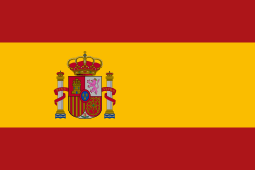ESCULTURA ARTÍSTICA DA PREGUIÇA GIGANTE
DESCRIÇÃO
A escultura artística homenageia as preguiças que habitam a região de Rondônia principalmente durante o pleistoceno, na escala do tempo geológico, que abrange aproximadamente de 2,5 milhões de anos até cerca de 10.000 anos atrás. Estes impressionantes animais coexistem com outros da megafauna como por exemplo, gliptodontes, mastodontes e toxodontes.
FÓSSEIS
Estudos indicam a presença pelo menos de três espécies distintas de preguiças gigantes na região do rio Madeira. Os fósseis mais frequentemente encontrados na localidade de Araras pertencem à espécie Eremotherium Laurillardi, da família Megatheriidae.
IMPORTÂNCIA
A escultura celebra a rica história de megafauna e também convida à uma reflexão sobre a biodiversidade e as extinções sobre a evolução da Terra e suas formas de vida ao longo do tempo.
DESCOBERTA DA PALEOTOCA
Recentemente, foi identificada no distrito de Vista Alegre do Abunã, a maior paleotoca já registrada no Brasil. Essa descoberta complementa os indícios sobre os habitats das preguiças gigantes e outros seres da megafauna.
PROGRAMA EDUCATIVO
Esta obra faz parte do programa SGBeduca, que visa incentivar a educação, divulgação, popularização das geociências e incentivo ao turismo científico. Através de exposições e atividades educativas, busca aumentar a conscientização sobre a importância da preservação do patrimônio geológico, histórico e cultural.
 ARTISTIC SCULPTURE OF THE GIANT SLOTH
ARTISTIC SCULPTURE OF THE GIANT SLOTH
DESCRIPTION
The artistic sculpture pays homage to the sloths that inhabited the Rondônia region mainly during the Pleistocene, on the geological time scale, which spans approximately 2.5 million years to approximately 10,000 years ago. These impressive animals coexist with other megafauna such as glyptodonts, mastodons and toxodonts.
FOSSILS
Studies indicate the presence of at least three distinct species of giant sloths in the Madeira River region. The fossils most frequently found in the Araras locality belong to the species Eremotherium Laurillardi, from the Megatheriidae family.
IMPORTANCE
The sculpture celebrates the rich history of megafauna and also invites reflection on biodiversity and extinctions on the evolution of the Earth and its life forms over time.
DISCOVERY OF PALEOTOCA
Recently, the largest paleocave ever recorded in Brazil was identified in the Vista Alegre do Abunã district. This discovery complements the evidence about the habitats of giant sloths and other megafauna.
EDUCATIONAL PROGRAM
This work is part of the SGBeduca program, which aims to encourage education, dissemination, popularization of geosciences and encouragement of scientific tourism. Through exhibitions and educational activities, it seeks to raise awareness about the importance of preserving geological, historical and cultural heritage.
 ESCULTURA ARTÍSTICA DEL PEREZOSO GIGANTE
ESCULTURA ARTÍSTICA DEL PEREZOSO GIGANTE
DESCRIPCIÓN
La escultura artística rinde homenaje a los perezosos que habitaron la región de Rondônia principalmente durante el Pleistoceno, en la escala de tiempo geológico, que abarca desde hace aproximadamente 2,5 millones de años hasta hace aproximadamente 10.000 años. Estos impresionantes animales conviven con otra megafauna como gliptodontes, mastodontes y toxodontos.
FÓSILES
Los estudios indican la presencia de al menos tres especies distintas de perezosos gigantes en la región del río Madeira. Los fósiles más frecuentemente encontrados en la localidad de Araras pertenecen a la especie Eremotherium Laurillardi, de la familia Megatheriidae.
IMPORTANCIA
La escultura celebra la rica historia de la megafauna y también invita a la reflexión sobre la biodiversidad y las extinciones, sobre la evolución de la Tierra y sus formas de vida a lo largo del tiempo.
DESCUBRIMIENTO DE PALEOTOCA
Recientemente, en el distrito de Vista Alegre do Abunã fue identificada la paleocueva más grande jamás registrada en Brasil. Este descubrimiento complementa la evidencia sobre los hábitats de los perezosos gigantes y otra megafauna.
PROGRAMA EDUCATIVO
Este trabajo se enmarca en el programa SGBeduca, que tiene como objetivo fomentar la educación, la divulgación, la popularización de las geociencias y el fomento del turismo científico. A través de exposiciones y actividades educativas se busca concienciar sobre la importancia de preservar el patrimonio geológico, histórico y cultural.

